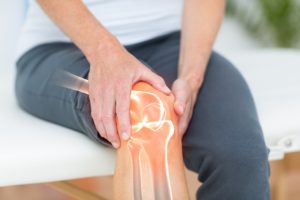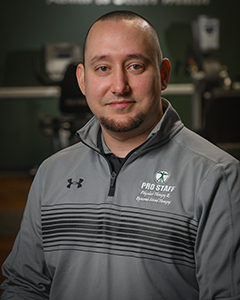All about meniscus injury

What is a meniscus? What is its purpose? How do you treat a meniscus injury? Dr. Koc explains.
Meniscus injury can severely impact an individual’s mobility. In turn, this can have a negative effect on one’s daily routine. In some cases, surgery will be required to repair the meniscus. Regardless, one will need to work with a physical therapist in order to fully recover and regain range of motion.
I have worked with many patients experiencing knee-related conditions in my career. It is my hope that, after reading this, you will have a better understanding of the meniscus, the nature of a meniscus injury, and most importantly – what your recovery program could look like.
What is a Meniscus?
A meniscus is the fibrocartilaginous disc structure that is found in the knee. There are two minisci per knee: a medial which is found on the inside portion of the knee and a lateral which is found on the outside portion of the knee. The purposes for the menisci are to increase the congruency of the thigh bone and the shin bone and to provide extra cushion to the knee joint while in a weight-bearing position.
Does a Meniscus Injury Require Surgery?
Depending on the severity of the meniscus injury, you may or many not require surgery. Some portions of the meniscus that have a direct blood supply, known as the red-red zone, are more likely to heal with physical therapy and conservative management.
Conversely, meniscus tears that involve the red-white zone do not have as direct of a blood supply. Though these injuries may improve with conservative management, they are more likely to require surgery.
There are also regions of the meniscus that that do not have a direct blood supply, the white-white zone. These cannot heal on their own and will require surgery if the patient experiences many functional limitations.
What Does a Meniscus Injury Feel or Look Like?
The medial meniscus has less movement compared to the lateral meniscus. This makes it more likely to become injured. If you injured your meniscus, you may be experiencing the following symptoms:
- Pain in the knee
- Swelling
- Popping or locking of the knee
- Difficulty straightening or bending knee
- Difficulty pivoting or twisting while in a weight-bearing position
How is a Meniscus Injury Diagnosed and Treated?
A meniscus injury is confirmed with an MRI. If surgery is required, there are several options that surgeon may discuss with you. These procedures can include a repair of the torn meniscus, a partial or full removal of the meniscus, and allograft transplantation.
After a medical assessment of your condition, a physical therapist will evaluate your strength, range of motion, joint mobility, gait pattern, and overall functionality. This will happen whether the patient has or has not had surgery. From there, the physical therapist will work with the patient to develop a customized exercise program with the goal of recovery in mind.
Looking to Treat Your Meniscus Injury? We Can Help.
With multiple locations in New Jersey, the Pro Staff Physical Therapy team works with countless patients experiencing meniscus injury. We work to assess your individual injury and develop a fully customized treatment plan designed specifically for you.
Let our physical therapy team help you recover from meniscus injury. Contact us today for more information or request an appointment at the Pro Staff Physical Therapy center nearest to you.
SHARE THIS STORY
How to Relieve Back Pain With Physical Therapy
How to Relieve Back Pain With Physical Therapy Back pain affects millions of people each year and is one of the leading causes of disability worldwide. Did you know that 20 to 25 [...]
Recognizing Sever’s Disease in Active Children
Recognizing Sever’s Disease in Active Children Inspired by a recent patient, we’re raising awareness about Sever’s disease, a common but often underdiagnosed cause of heel pain in active children. This condition affects the [...]
Managing Stress & Anxiety: The Role of Physical Therapy
Managing Stress & Anxiety: The Role of Physical Therapy As October rolls in, we not only embrace the crisp fall air but also observe two important health campaigns: Physical Therapy Month and World [...]



